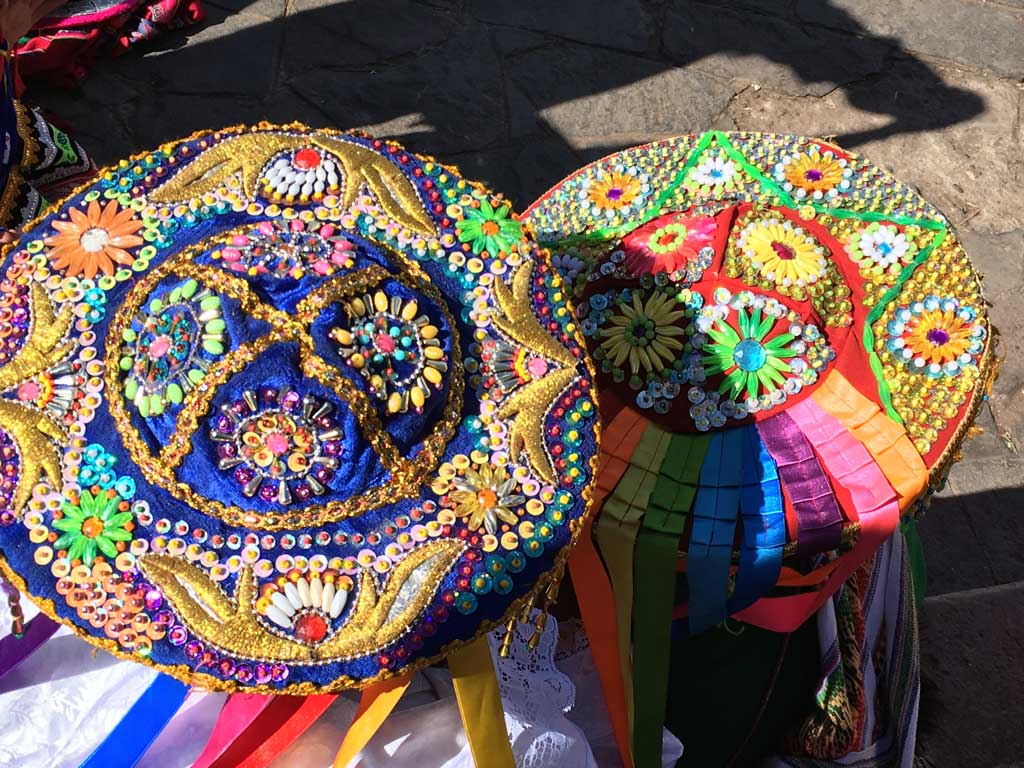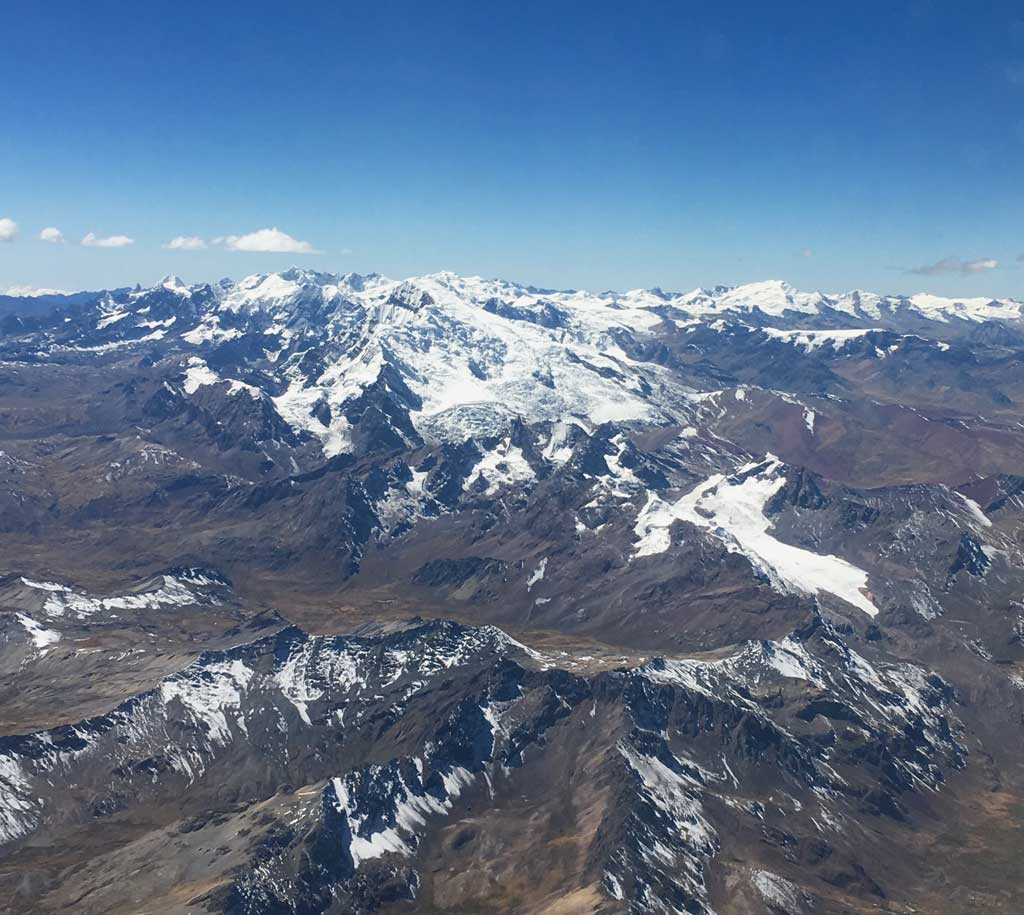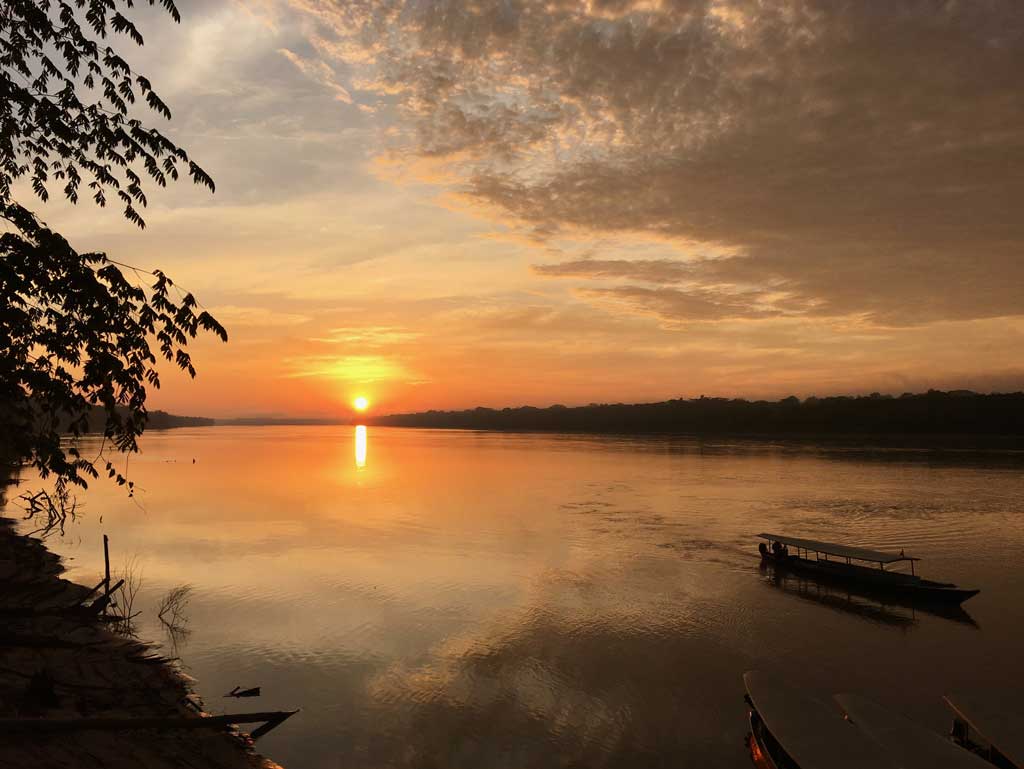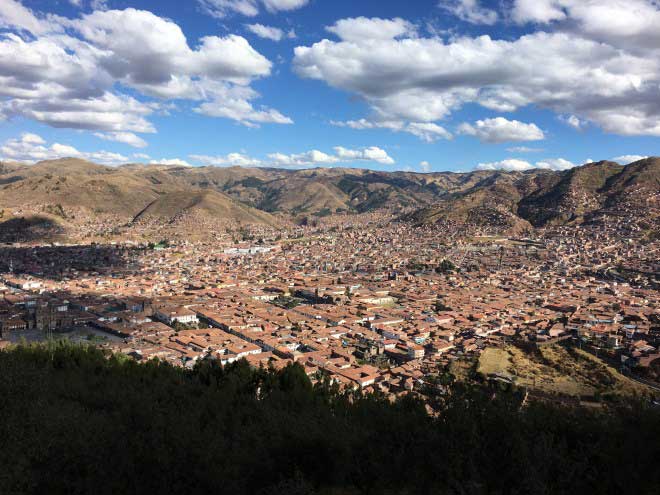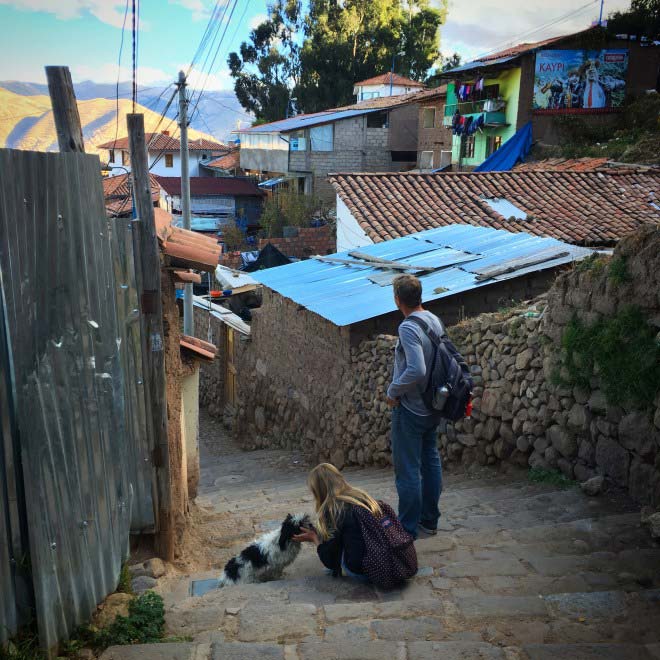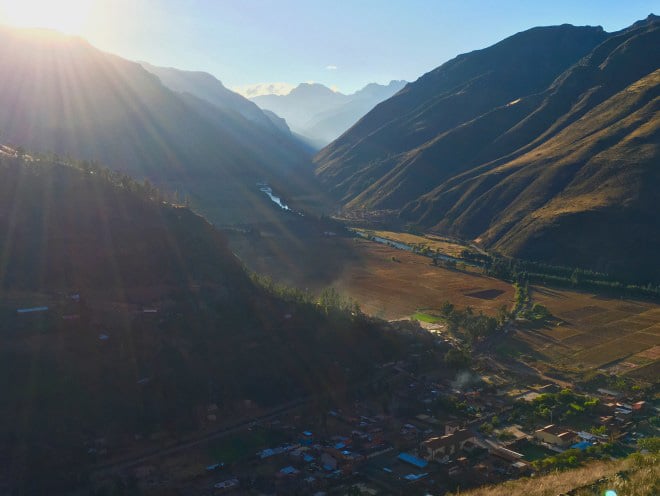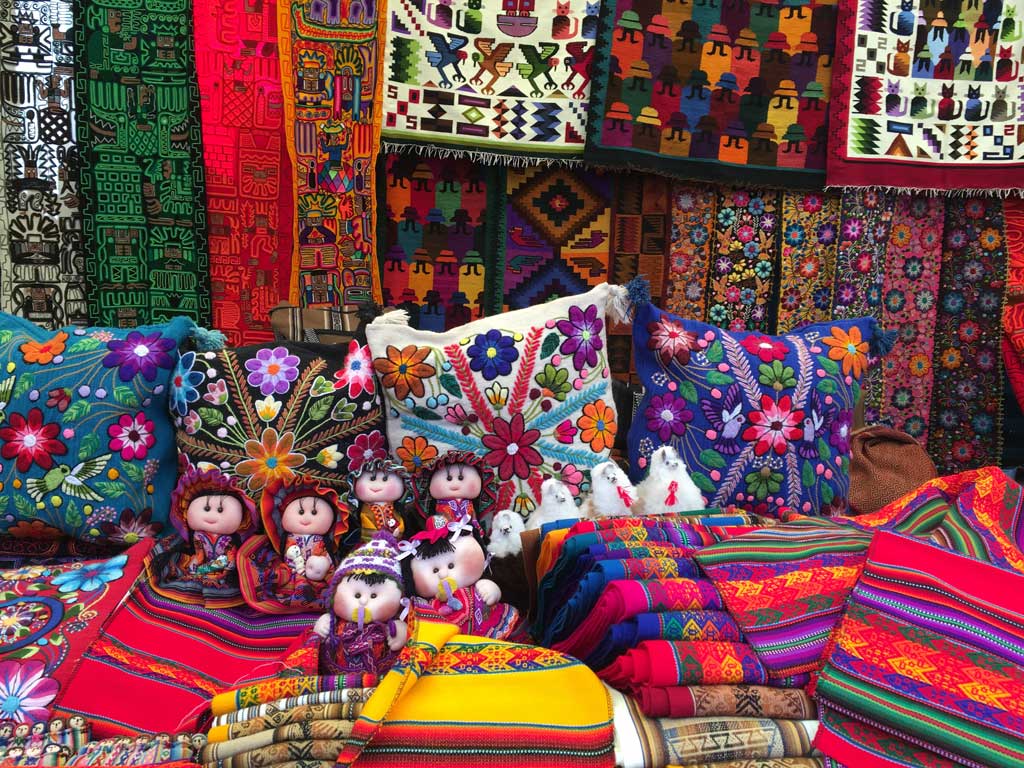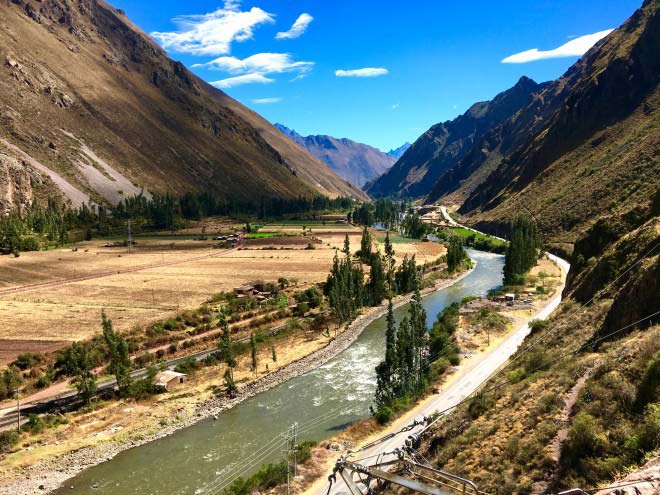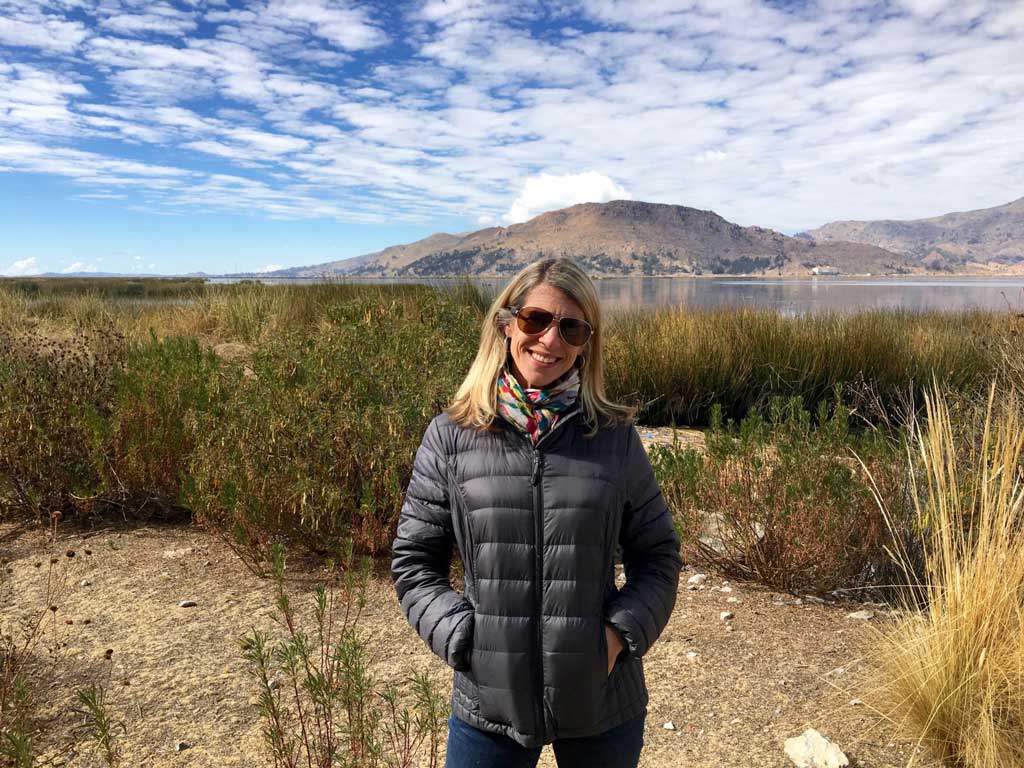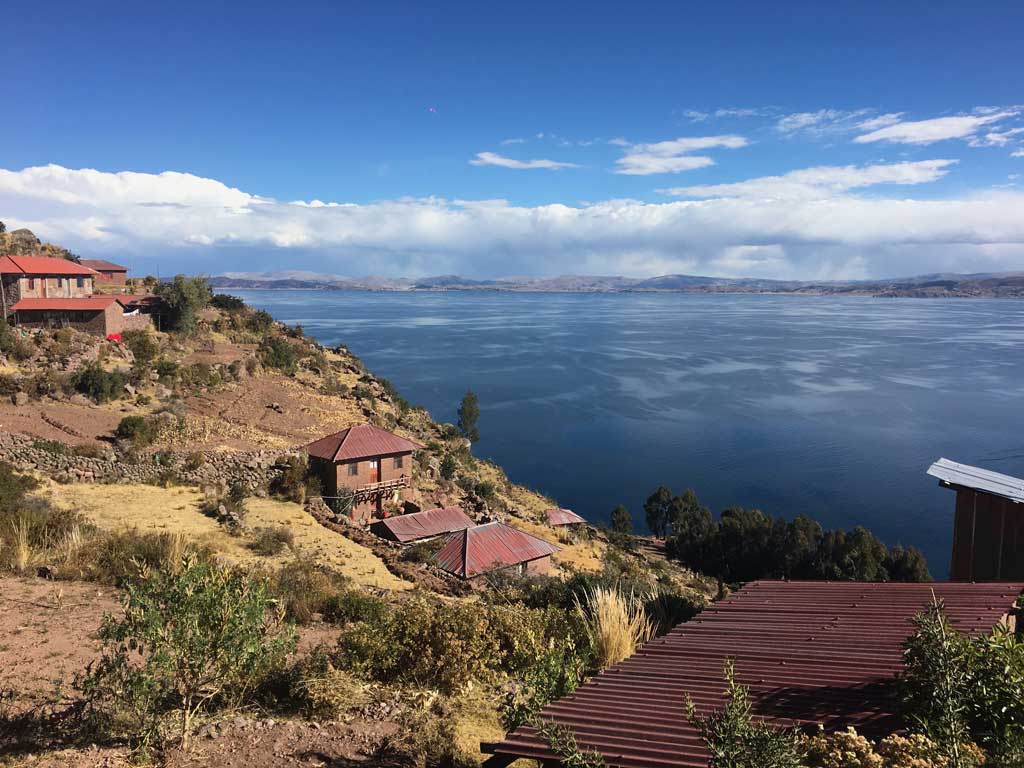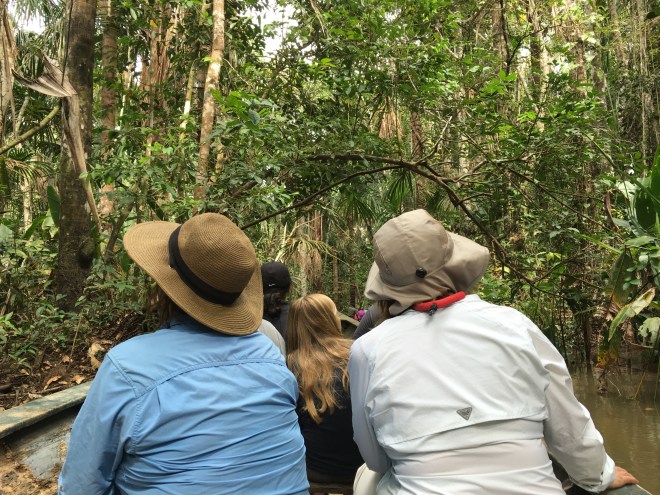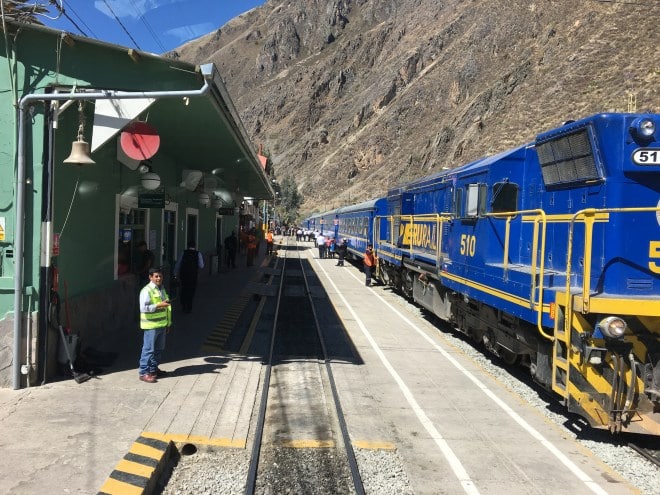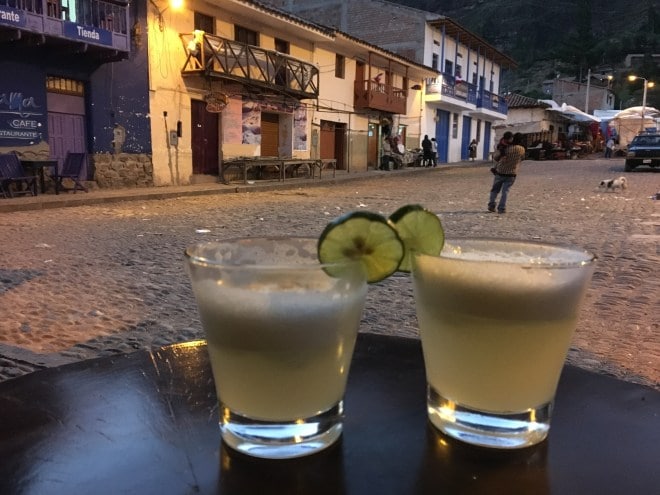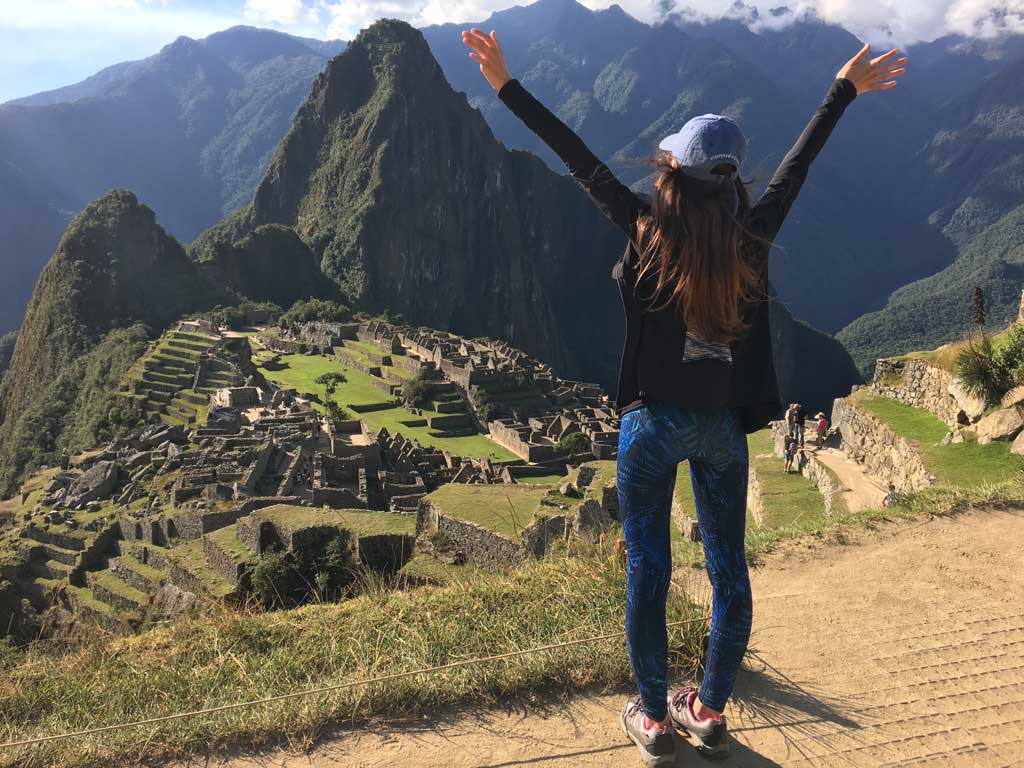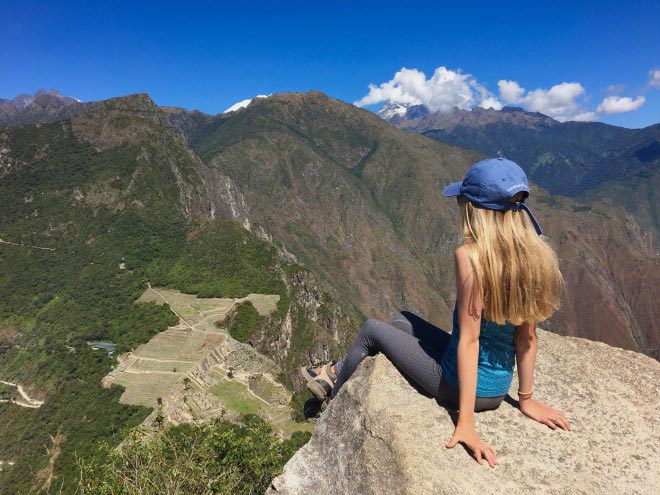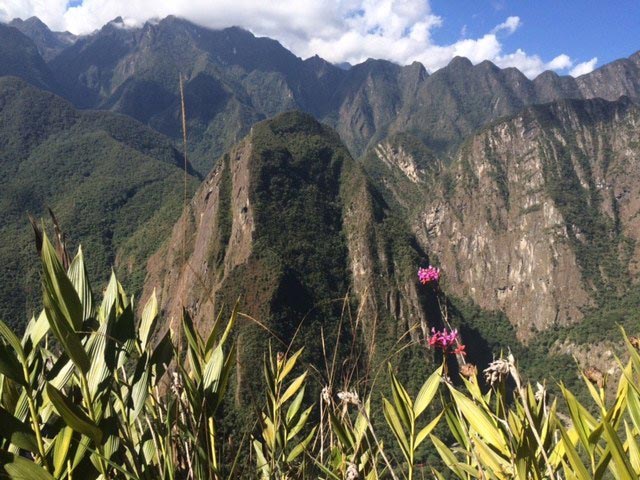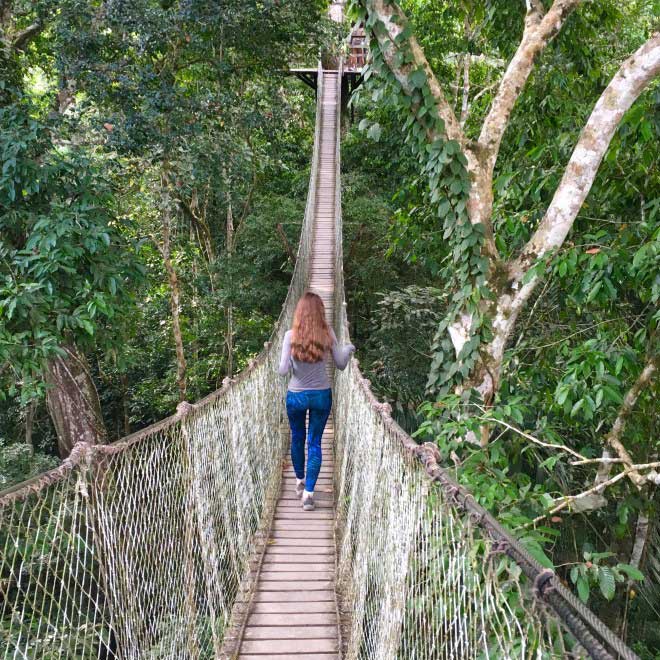From impressive archaeological ruins and stunning landscapes, to lively culture and world-class cuisine, Peru has the perfect blend of sights and activities for those seeking a meaningful travel experience. Follow these tips for the perfect Peruvian adventure.
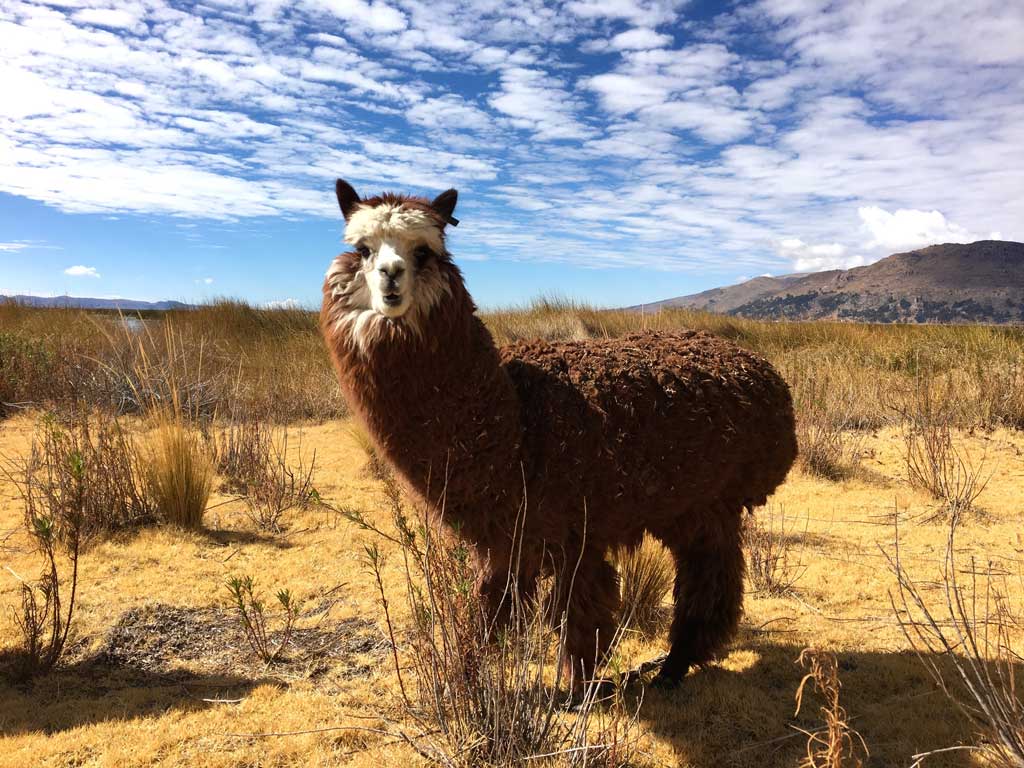
There is no shortage of alpacas and llamas in Peru. This is an alpaca, distinguished by its shorter, straighter ears.
Travel in the Dry Season
My first trip to Peru was in June, which is the beginning of the high season that corresponds to South America’s winter. The weather is mostly dry, clear, sunny, and cool through October, except in the Amazon Basin where it’s still hot and tropical (though not too rainy). This is ideal for travel, but it’s also more crowded and prices are higher, especially in July and August. The Inti Raymi Festival celebrating the winter solstice takes place in and around Cusco on June 24 and is a huge draw for Peruvian and international visitors alike. If you’re planning to be there at this time, make sure you book a hotel far in advance.
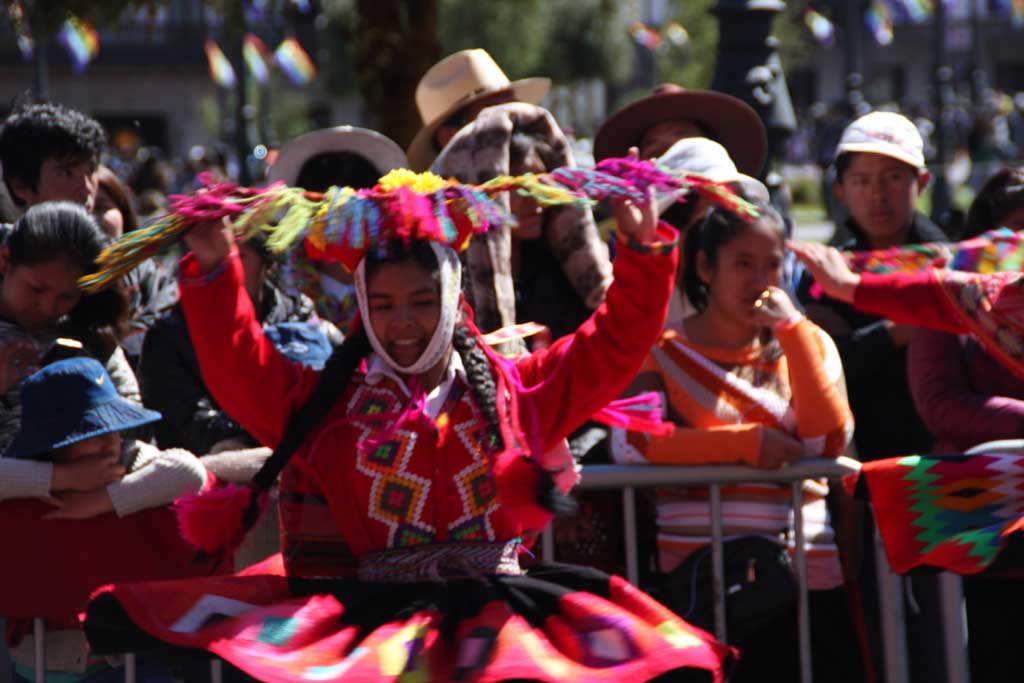
Celebrated every year on June 24, Inti Raymi is the biggest festival in South America after Carnival.
Summer in Peru, roughly November through March, is the wet season and it rains a lot. From what some of our guides described, this doesn’t sound like a great time to be there unless you like getting wet. Traveling in the shoulder season is a good compromise – this would be in April/May and September/October, when prices and crowds diminish, but the weather is still nice for the most part.
Be strategic about the altitude
Peru has a diverse geography, ranging from coastal lowlands and tropical rainforests, to high-altitude mountains. Many of the country’s most popular tourist destinations, like Cusco and Lake Titicaca, are at altitudes high enough to cause altitude sickness, with symptoms ranging from light-headedness and shortness of breath, to nausea and vomiting. To mitigate the effects of altitude, you should plan your itinerary so you do all your higher altitude travel together, and ideally do it in a gradually increasing progression in order to acclimatize.
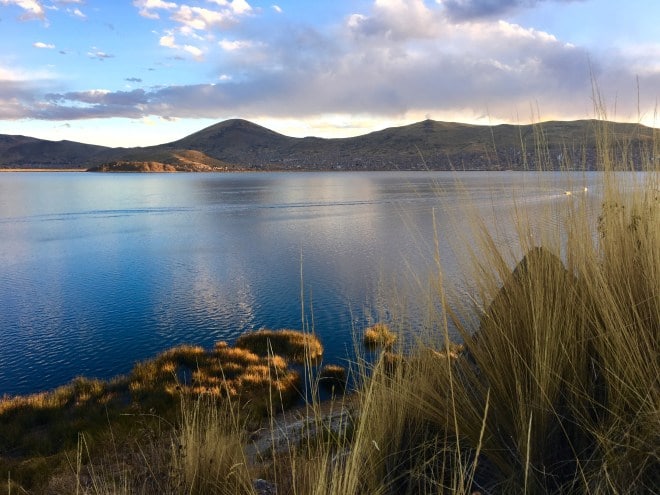
Lake Titicaca is the second largest lake in South America, and at 12,500 feet, is the largest navigable lake at such a high altitude.
If, for example, your trip includes a visit to the low-altitude Amazon Basin (something I highly recommend), it’s best to either start or end your trip here. We scheduled our Amazon jungle adventure in the middle of the trip, after Cusco and before Lake Titicaca — at 11,500 feet and 12,500 feet respectively. As a result, we had to acclimatize twice during our two-week stay. It would have been a lot easier if we had flown to Lake Titicaca after Cusco, and then finished in the Amazon before flying out through Lima, which is also only at about 500 feet above sea level.
Another altitude-related tip is to stay in the Sacred Valley, instead of Cusco, before going to Machu Picchu. Why? Because at 11,500 feet, the colonial city of Cusco can be tough on the lungs for someone just flying in from sea level. Towns in the Sacred Valley, like Pisac, Urubumba, and Ollantaytambo, are about 2,000 feet lower than Cusco, and by staying here first you’ll have an easier time adjusting to the altitude. After the Sacred Valley and Machu Picchu, you can then head to Cusco for a few days. Having given yourself ample time to adjust to the thinner air, you’ll be able to better enjoy the charms of this UNESCO World Heritage Site, and your lungs will be better equipped to handle its steep, hilly streets.
Linger in the Sacred Valley
Adjusting to the altitude isn’t the only reason to consider a longer stay in the Sacred Valley. While many visitors to Peru will use Cusco as their base for day trips to Pisac, Urubumba, or Ollantaytambo, all three towns merit more time and exploration. With the beautiful Urubumba River flowing through it and tall canyon walls rising dramatically on either side, the Sacred Valley is not only postcard perfect, but there’s also much to see and do.
Pisac, which is only about 45 minutes from Cusco, is known for its lively market and sits at the base of an impressive Incan fortress. Fast becoming a spiritual destination for expats, Pisac has many restaurants and shops to keep you busy.
Ollantaytambo is farther down the valley, closer to Machu Picchu. It is dominated by two outstanding ruins and has narrow, cobblestone streets that have been continuously inhabited since the 13th century. Urubumba is less glamorous than Pisac and Ollantaytambo and doesn’t have any ruins, but the countryside is lovely, and a lot of adventure activities, like zip lining and white water rafting, are based here. Many locals also live in Urubumba, giving it more of an authentic feel.
Dress in layers
Unlike a trip to Hawaii or the Caribbean, packing for Peru takes a bit more planning because of the country’s extreme climate variations (and microclimates.) During the dry season, the key is to dress in layers. The days are sunny and comfortably warm, but the nights are cold, sometimes dropping into the 30’s Fahrenheit. You’ll want to have a warm, but lightweight jacket (a fleece or quilted jacket is good), long sleeve shirts, a sweater or two, a light scarf, and even a skull cap and gloves (though these are fun and cheap to buy in the markets). Short-sleeve shirts are fine for layering, especially since the sun at high altitude is strong and can make it feel warmer than it actually is.
Hiking shoes or boots are a must for your Peru trip; in fact, I wore mine about 90% of the time. You can probably get by with these and a pair of flip-flops exclusively, and maybe one pair of nice shoes if you plan to spend time enjoying the trendy restaurant scene in Lima. With so many uneven cobbled streets though, shoes with heels are not very practical in most of Peru.
For pants, I packed jeans, lightweight hiking pants, and black workout leggings. Many hotels do not have heat, and given the cold nights, you’ll want to have warm pajamas and fuzzy socks or slippers for your feet. I should note that all of the hotels have very warm bedding with down comforters and warm blankets.
For the jungle, which is hot and humid even in winter, and full of mosquitos, you’ll want lightweight, long-sleeve pants and button down shirts, plus sneakers or hiking boots. Shorts and shirt-sleeve shirts will be ok in the jungle, as long as you put on lots of sunscreen and mosquito repellant.
While we weren’t in Peru in the wet season, if you are traveling during this period, you’ll want to make sure you have a rain slicker or poncho, rain shoes, and an umbrella (keep in mind that umbrellas are not allowed in Machu Picchu.)
Bring carry–on size luggage
If you are taking the train to Machu Picchu, be advised that Peru Rail, has restrictions on baggage size and weight. Technically, bags are not supposed to weigh more than 11 pounds or measure more than 62 linear inches. That said, no one ever weighed of measured our bags, so I’m not sure how strictly this is enforced. Still it’s best to assume they’ll check and pack accordingly.
As a family of four, we brought two big pieces of luggage and three smaller pieces, plus each of us had a daypack. Before going to the Sacred Valley and Machu Picchu we “repacked†into the three smaller pieces of luggage and stored our larger luggage at our hotel in Cusco, which we’d be returning to later. Most hotels in Cusco and the Sacred Valley will store your luggage for free. The train stations also have lockers.
As an added note, if you are going to the Amazon, you should check with your hotel or tour provider to see if they also have restrictions on baggage size. We weren’t sure beforehand so packed into smaller bags just to be safe.
Carry small denominations of soles
The currency in Peru is the sol, and in June 2016 the exchange rate was roughly three soles to the dollar. Most transactions are also in cash, and for these reasons you’ll want to start out your day making sure 1) you have cash, and 2) you have small enough denominations for tips and small purchases.
Being from the States, where everything can be bought with a card, we never seemed to have enough cash on hand, and when we did, the denominations were often too big. Having 10 soles bills (about $3) seemed to be a good amount. Many public bathrooms charge one sol (including the bathrooms at Machu Picchu), so having a bunch of one sol coins is a good idea. Peru does not have a strong tipping culture like in the United States, but we usually gave wait staff and taxi drivers a few soles, and more (20 to 30 soles) to guides. U.S. dollars are also generally accepted in Peru, although we found it easier to pay in local currency.
Plan ahead for Machu Picchu
Visiting Machu Picchu is such a big deal that I’ve devoted a separate blog post to the topic, but wanted to at least cover the basics here. In a nutshell, you should plan and book this part of your trip well in advance (especially during high season) as the government of Peru has strict visitation rules to reduce the impact of over tourism. These rules include a daily cap on the number of visitors, specific entry times, and a four-hour time limit. You can purchase tickets to Machu Picchu online from a number of tour operators or through the official government website. You’ll pay less by booking through this site, but be warned, it is not at all user friendly and may only take certain credit cards. Regardless of where you buy your tickets, be sure to get them far in advance, particularly if you’re visiting in the high season. We booked ours about six months before our trip.
Many visitors to Machu Picchu also complete the strenuous, but once-in-a-lifetime hike to the peak of Huayna Picchu for an unparalleled bird’s eye view of the ruins. Huayna Picchu is the highest peak you see in typical photos of Machu Picchu. The hike is steep and can be a little unnerving for those afraid of heights, but is totally worth it. (I am extremely afraid of heights, and did fine, so I wouldn’t let that stop you.)
The Huayna Picchu trail starts at the Main Plaza in Machu Picchu, so you have to be in the ruins in order to do it. In fact, to hike Huayna Picchu, you must book a combo ticket in advance along with the Machu Picchu ruins Only 400 hikers are permitted to do this hike each day. Your hike must be done at one of three designated start times and be completed within the four-hour time limit for your Machu Picchu stay. Staff strictly enforces these limitations by checking passports and requiring each hiker to sign in and out at the trailhead.
Check insurance coverage for vaccines: According to the CDC website, there are no mandatory vaccines to enter Peru. This is important to know because many insurance companies will not cover vaccines unless the CDC explicitly requires it. This poses a dilemma for Peru travelers who are going to the Amazon region because the Ministry of Health recommends getting vaccinated for yellow fever. This vaccine (as well as thyphoid which is also recommended) is expensive, but since it is technically not required to enter Peru, insurance may not cover it.
It’s a good idea to call your insurance company beforehand to find out which vaccines your policy will cover. My insurance company initially said they would probably not pay for yellow fever or thyphoid vaccines. Planning in advance to appeal this expected decision, I had each of our doctors write a note indicating that the yellow fever and thyphoid vaccines were required for travel to the Amazon. Much to my surprise and delight, they covered almost 100% of the cost! For more information on vaccines, click here.
And a quick note about malaria. According to the CDC website, malaria is present in the Amazon, and as such, we all had prescriptions for antimalarial medications. While in the Amazon, my husband got very sick for about a day, and we’re pretty certain it was a reaction to this medication. Our guide told us we didn’t need to worry about malaria anyway and suggested he stop taking it. As soon as he did, he recovered. My recommendation would be to check with your doctor and maybe ask your hotel or tour operator what they suggest.
Consider hiring a tour agency: This is purely personal preference, but we found it helpful to engage the assistance of a tour company that specializes in travel to South America. There are a number of operators out there, and we used Peru for Less based on the recommendation of a friend. I would highly recommend them to anyone. Two others recommended by my mother-in-law who is a travel agent are G Adventures and EcoAdventures.
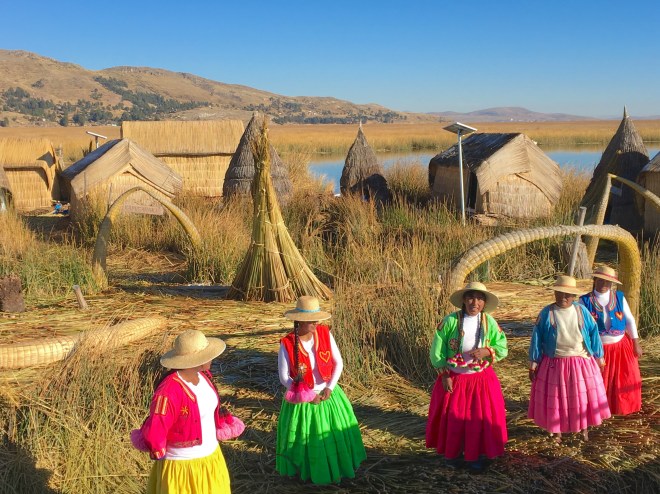
Working with a tour agency, we were able to experience wonderful excursions, including an all-day trip to the islands of Lake Titicaca.
My only regret is that we didn’t consider this option sooner; it would have prevented us from booking the Amazon part of our trip in the middle of our stay. The nice thing about Peru for Less (and I assume the other agencies) is that they can do as much or as little for you, and they were flexible about working within our budget. You can have them put together and book the entire itinerary from A to Z, or like we did, you can have them plan and book parts of the trip.
We booked all of our flights ourselves (international and domestic), some of our hotels, and the entrance tickets to Machu Picchu and Huayna Picchu. We used Peru for Less to book the hotels we hadn’t already booked on our own, our train to and from Machu Picchu, and several tour guides and excursion leaders. Most importantly, Peru for Less organized all of our ground transportation to and from airports and between destinations. Given the fact that we don’t speak Spanish, we were traveling with kids, and the roads are not always in the best condition, it was a huge relief to rely on safe and knowledgeable drivers. The vehicles were comfortable and well maintained, and the drivers were always on time. So in the end, while we enjoyed the challenge of doing much of the planning on our own, it was a big help to be able to tap into local expertise during the process.

